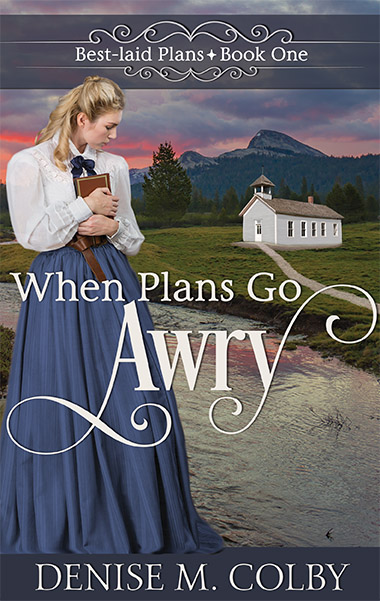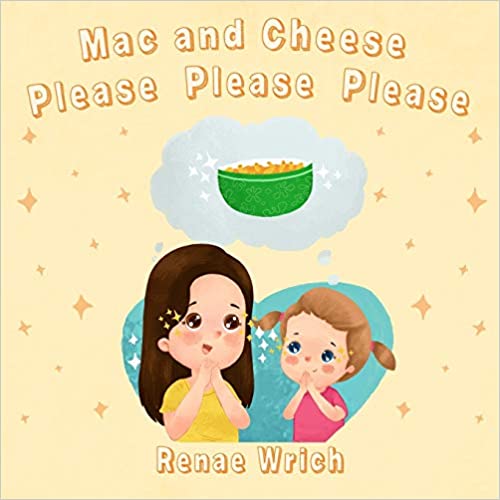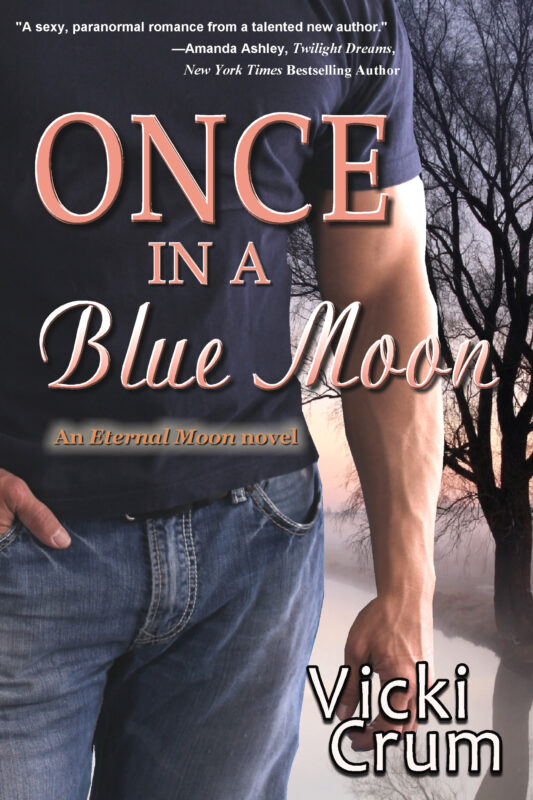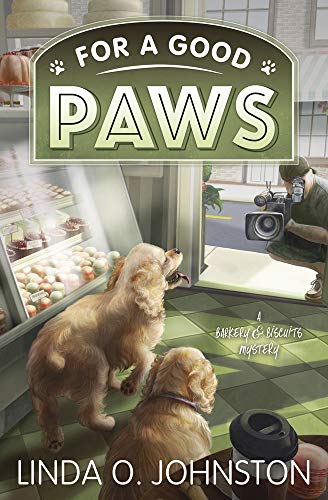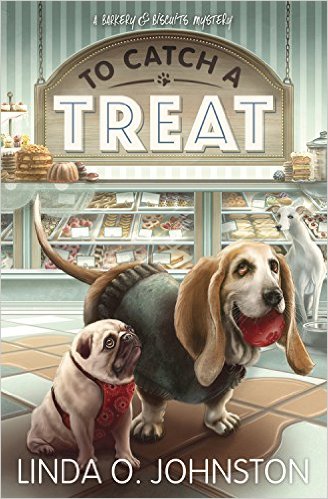Releasing the Lyon
February 23, 2009 by A Slice of Orange in category Lyon's Lair tagged as Lyon's Lair
Building a name in publishing is tricky under any circumstances.
Changing your name after you’re published is just crazy.
So of course, I changed my name.
When I began my career with the Samantha Shaw Series, there was talk about Apodaca being too difficult to pronounce. I said, “Uh, hello, Evanovich?”
Okay, I didn’t say it, but I thought it! As it turned out, my publisher grew comfortable with the name and we went forward.
Several years later, my agent began submitting a paranormal proposal I wrote that was bought by Random House/Ballantine.
Insert HUGE excitement here. It would take six blogs to tell you how surprised I was, how scared, how sure I was that they’d realize their mistake. All the usual insecure crap. But enough of that!
Everything was going along swimmingly until I got a call from my agent, “We have a problem.”
No one wants to hear that from their agent! I sincerely thought my editor hated the completed book. I saw a blue vest at Wal Mart in my future. Then my agent said, “The sales people can’t pronounce your name.”
Holy Cow—way to scare me to death!
Long story short, Jennifer Lyon was born. Now we had to introduce her around and we had to do it fast. One thing I have learned over the years is that the promotion that works best is the promotion we enjoy.
So even though my Wing Slayer Hunter series is dark and sexy, I decided to go with a light and fun plan to promote Jen Lyon. First I set out to differentiate the two names:
Apodaca writes mysteries and romance. She is the boring serious one. She never gets into trouble.
But she has an alter ego: Jen Lyon, who insists of writing paranormal. Lyon is a lush who thinks she’s a witch, and if there’s no trouble around, she goes out, finds it and drags it home. She does the things Apodaca would never dare do.
Then I created a blog-site for Lyon where I gave her this whole personality. She loves witches and appletinis and men. This has turned into an ongoing joke on the blog. People who visit the blog bring cyber-appletinis. Sometimes they conspire to steal things (and by things, I mean the hunky men I’ve posted on the blog in a category called Wing Slayer Worthy) and they give Jen Lyon appletinis so she won’t notice their theft.
It’s taken on a life of its own. It’s hilarious and fun.
Will it sell books? I have no idea. All I know is that we’ve released the Lyon and I don’t know if we’ll ever cage her again!
BLOOD MAGIC is officially released tomorrow!

Jennifer Lyon always wanted to be a witch. When her witch-powers didn’t materialize, she turned to creating magic in her books. BLOOD MAGIC is the first book in an enchanting, passionate and supernatural series. Visit Jennifer Lyon at www.jenniferlyon.com
Advice to Myself as a Newbie Author
February 22, 2009 by A Slice of Orange in category Advice to Myself as a Newbie Author by Shauna Roberts tagged as Advice to Myself as a Newbie Author, Ellie Marvel, Jody Wallaceby Shauna Roberts
http://ShaunaRoberts.blogspot.com
Today’s Guest: Jody Wallace
Jody Wallace is published in romance fiction under the names Jody Wallace and Ellie Marvel. She has always lived with cats, and they have always been mean. Her most recent release, written as Ellie Marvel, is the e-novella Megan’s Choice (Red Sage). Survival of the Fairest (Samhain), written as Jody Wallace, will be released in paperback in July 2009.
Jody, if you could travel back in time to before you were first published, what advice would you give yourself?
 I used to be single and have lots of free time. I wore cool clothes, socialized on a regular basis, drove a two-seat convertible (it got 42 MPG—don’t sneer!), read new releases by my favorite authors before their next book came out, sampled all the trendy restaurants, enjoyed museums and festivals, slept in on weekends, and made a major dent in my student loans because I only had my expenses to worry about. I wanted to be a published poet and had some minor success with literary journals, which is where most poets get their start. Poetry was intense, challenging, fascinating, and, best of all, succinct.
I used to be single and have lots of free time. I wore cool clothes, socialized on a regular basis, drove a two-seat convertible (it got 42 MPG—don’t sneer!), read new releases by my favorite authors before their next book came out, sampled all the trendy restaurants, enjoyed museums and festivals, slept in on weekends, and made a major dent in my student loans because I only had my expenses to worry about. I wanted to be a published poet and had some minor success with literary journals, which is where most poets get their start. Poetry was intense, challenging, fascinating, and, best of all, succinct.
I definitely produced more than one poem per annum.
Fast forward a number of years we will not dwell on, and so much has changed. I’ve switched from single to married with kids, cool clothes to yoga pants and monkey slippers, convertible to minivan, adult fiction to Dr. Seuss, sleeping in to rising with babies. I’ve also switched from poetry to fiction. What was I thinking, right? Now that I have negative free time, why did I convert to a type of writing that takes me two hundred times as long as most of my poems?
Because I have an inherent narrative impulse (a.k.a. can’t-shut-up-itis) that wasn’t translating well to verse. And because I’m nuts. But I’m in great company!
Either way, if I could go back in time to when I was contemplating a fiction-writing career, here are some of the things I’d warn me about (besides getting hooked on cheese and pasta). You will notice a theme that may or may not apply to your situation, but hopefully some of it will translate.
1. Don’t beat yourself up if your productivity declines while you have wee ones. And whatever you do, don’t compare yourself with other writers who seem to be achieving so much more, both in their lives and their careers. They’re just better at faking it. I promise!
 2. Resist overdoing the social networking. Once you start, you can . . . not . . . stop. Unless, of course, you’re guest blogging somewhere like the OCC-RWA blog.
2. Resist overdoing the social networking. Once you start, you can . . . not . . . stop. Unless, of course, you’re guest blogging somewhere like the OCC-RWA blog.
3. That agent or publisher you have mixed feelings about? Yeah. Back away slowly and professionally. You won’t be burning a bridge if you’re wrong, but it will be worth it if you’re right and you get to tell yourself, “I told me so!”
4. The TV program you’re dying to watch will be just as good on TiVo, maybe better, the way lasagna and beef stew are better the second day. Right now, use your TV time to write. Or do other stuff, such as parenting, which will open up a separate block of writing time. Save TV for when you absolutely cannot write due to death of brain cells or presence of husband. Or both.
5. That thing you did (or will do) in 2006? You knew in your gut it was a bad move. Trust your gut. Post-babies, there’s so much more of it to trust, after all.
6. If you hate conferences, don’t go to them. Your stress levels and budget will thank you, and your husband won’t take the kids to McDonald’s to eat every . . . single . . . freakin’ . . . day, the big dummy. Of course they’re going to start puking right about the time you get home.
7. Do not hang your dry erase to-do list where cats or small children can reach it. They will smudge the very important item on the bottom and you will miss a deadline that results in a chain of events involving ice cream but also tears and self-recrimination.
 8. With that in mind (and because you will lose your mind), always post multiple reminders. (Of everything.)
8. With that in mind (and because you will lose your mind), always post multiple reminders. (Of everything.)
9. You don’t have to go to every kiddie school party, and you sure as heck don’t have to be room mommy. Just say no to volunteering! For now, at least. You have so much guilt in your life, you won’t notice the extra helping.
10. Last but not least, it all comes out in the wash. It really does. And then you’ll need a new washing machine, because DUDE, who put that in the laundry??
✥✥✥✥✥
To learn more about Jody, please visit her Website at http://www.jodywallace.com or the cat’s Website at http://www.meankitty.com. They share a blog at http://blog.jodywallace.com. Her new e-novella, Megan’s Choice, written as Ellie Marvel, can be downloaded from Red Sage now. Survival of the Fairest is already available as an e-book from MyBookstoreAndMore and will be released in paperback in July 2009.
The Write Way
February 17, 2009 by A Slice of Orange in category The Write Way by Maureen Child tagged as Maureen Child, NAL, Silhouette, Silhouette Nocturne, The Write WayThat’s right! To celebrate 60 years of bringing romance to the world, Harlequin/Silhouette is giving away 16 books, FREE.
Just go to this site,http://www.harlequincelebrates.com/ and download them!
I’m pleased and honored to say that one of my books, BABY BONANZA is one of the books offered.
But why is this good for writers? That’s easy. Harlequin/Silhouette publishes 72 books a MONTH. That means even when the economy is rough and other publishing houses are being cautious, Harlequin/Silhouette is always looking for writers!
Why shouldn’t that be YOU??
So go to the site, get some free books and study them. Figure out which line your heart leans toward and then sit down and write. Polish. Perfect. And then submit.
Who knows?? Maybe the next time Harlequin/Silhouette gives away books, yours might be one of them!
Maureen Child is the author of more than 100 romance novels and novellas. At the moment, she’s hard at work on her next Silhouette Desire.
Visit Maureen at http://www.maureenchild.com/ or http://www.maureenchild.blogspot.com/
Her most recent titles are:
BEDEVILED, NAL, January 09
AN OFFICER AND A MILLIONAIRE, Silhouette Desire, Jan 09
VANISHED, Silhouette Nocturne, February 09
e-maginings: Amazon Kindle 2 Debuts
February 16, 2009 by A Slice of Orange in category Archives tagged as Amazon Kindle, audio books, copyright laws, e-books, e-maginingsA week ago, Amazon.com released the second version of its Kindle e-book reader. Owners of the first version had a day to order a new one and jump to the head of the queue, but I managed to resist the temptation.
The Kindle 2 is slimmer than the original, with more storage, longer battery life, faster page changes and an improved display. Another, more controversial, feature of the new device is the “Read-to-Me” feature which allows the Kindle to read aloud “every book, blog, magazine, and newspaper”. The Authors Guild quickly pointed out that this feature probably violates existing copyright laws.
Several of my books are available for the Kindle as e-books, but I own the audio rights and have not licensed them to anyone. On the other hand, if someone buys a copy of one of my books and wants to have it read to them by a goofy, machine-generated voice, do I care? At this point in time, I’m grateful for every sale. If the same books were available as professionally produced audio books, I’m sure I’d be looking at this differently.
I don’t know how all this will play out, but it seems like our rapidly-evolving technology has lawyers scrambling to keep up. It’ll be interesting to see what happens.
Linda
The Original Rat Pack
February 13, 2009 by A Slice of Orange in category Archives tagged as Eye on HollywoodAccording to Wikipedia, the Rat Pack was a group of popular entertainers most active between the Mid-1950s and mid-1960s. Its most famous line-up featured Frank Sinatra, Dean Martin, Sammy Davis Jr., Peter Lawford and Joey Bishop, who appeared together on stage and in films in the early-l960s, including the movie Ocean’s Eleven.
My definition: they were the coolest guys ever.
And how lucky for me, even if it was after their Rat Pack heyday, to have met all but one of them. If you’re wondering, it was Peter Lawford I missed meeting. However, I did get to be in the presence of his brother-in-law, Ted Kennedy.
Joey Bishop, the actual comedian of the group, was always a sweetheart. A down to earth type of guy who, whenever you approached him would automatically reach out to shake your hand. And then would proceed to talk to you as if you were a long lost friend.
Sammy Davis, Jr. I saw several times, but the most memorable was when he came to CBS to do the Carol Burnett Show. He was so touched by the warm welcome he received from everyone in the building, so to show his gratitude he put on a one man show for all the employees to see at five o’clock. To this day, I can’t hear “The Candy Man†on the radio without picturing Sammy singing and dancing to the tune, only a few feet in front of me on Stage 33.
Then there was the man himself, so fondly known as “The Chairman of the Boardâ€, Mr. Sinatra. I must have seen him at least four or five times. I’m also happy to say, that he was always nice to me on all the occasions. Whenever he was in Vegas, people would just watch him. He was always surrounded by guards whose main job was to keep the public a safe distance away from him–otherwise he was sure to get mobbed. It was pretty funny to watch Frank move from one part of the to the other and see a group of people in a huddle follow him. Once he sat in an open restaurant inside Caesars Palace with a bunch of friends and his wife Barbara, eating and drinking and conversing. All the while, people just standing, watching his every move. And if you’re wondering, yes, I was front and center among the crowd.
Luckily I had my Polaroid camera with me, so I seized the opportunity by snapping a picture of him. When Frank realized it, he motioned for me to hand the picture over. Because you don’t say no to the Chairman of the Board, I did. He must have liked what he saw because he signed it and returned it to me. He then blew several kisses in the air at me. And to paraphrase Sally Field…“Frank liked me…he really, really liked meâ€. Considering my age at the time and being a brunette, I figured I must have reminded him of his daughter. Needless to say, I was the envy of all his fans that night.
Another time I was in Vegas and my mother spotted him and handed me the camera and went racing over to “Old Blue Eyesâ€. The security guard next to Mr. S. was about to push my mother away when Frank held up his hand to stop him. “It’s okayâ€, he said. When I saw this, I tossed the camera over to the guard and ran to stand next to Frank myself. With my mother on one side of him and me on the other, Frank looked over to me and asked, “And just who are you?†“Her daughterâ€, I boasted. “Oh, okayâ€, he said, as he wrapped an arm around me, posing in the middle between me and my mother. To this day, that picture is proudly displayed in my living room for all to see.

And then there was Dean Martin, the most elusive of them all. Unlike the rest of the Rat Packers, he seldom ever made any appearances around town. It almost seemed impossible to spot him anywhere in Hollywood. But then one day Ann Margaret was doing her special at TV City. I liked her, and more than curious to see her, I wanted to see her husband, Roger Smith (star of TV’s 77 Sunset Strip) who I’d had a crush on since before I was a teenager. Unfortunately, it turned out that since he was such a pest to have around, they had him banned from the set. Rumor had it that Ann was a doll to work with, but Roger kept interfering with what he thought the show needed and more important, what his wife needed. It ended up causing a lot of delays and the simplest solution was to ban Roger from coming on the set altogether.
I took a seat, front row, just as Ann Margaret was about to do her song. All dressed up in a black cocktail dress, she was perched on the bench seat of a buckboard. The wagon behind her was filled with hay and above her suspended in the air was a collection of elaborate crystal chandeliers. The whole set was one big contradiction. But since the TV special was called “From Hollywood with Loveâ€, the whole premise was to show that Hollywood is nothing but an illusion. Well, maybe not everything is an illusion. Certainly, not the tall dark handsome man dressed in a tuxedo, seated next to Ann. He was real. And nothing could have blown me away more. It was Dean Martin.
To say I went into shock would be an understatement. According to the man who had accompanied Dean to the studio that day, when he looked over at me, all color had drained from my face and I had gone completely white. He said he thought I was going to pass out. After I explained my love of Dino and all my unsuccessful attempts of trying to see him, the man nonchalantly asked, “What would you do if he kissed you?†Breathlessly, I replied, “Oh die…just dieâ€. That’s when this sweet, anonymous stranger must have realized he was in the company of a deeply disturbed young woman. But if he did, he never let on. All he did was smile and told me to stay where I was. I figured he was either going to get me a drink of water, or bring over security. But instead, he brought Dean Martin.
This kind, wonderful stranger, without being asked, took it upon himself to bring my Dino over to me. Whoever he was, agent, friend or producer, I have no idea, but he had enough influence over Dean Martin to persuade him to come meet me. I vaguely remember the introduction. All I know for sure was of my own babbling and telling Dean how much he meant to me and my entire family. I’m certain that the king of cool was afraid he’d be held responsible if I dropped dead from all the excitement.
Now with just the two of us alone, Dean managed to coax me up from my seat and guide me over to an isolated part of the studio. And then in the manner you would use to try to sober someone up, he walked me around in circles, his arm entwined with mine. As we walked, he continually whispered words of assurance in my ear. “You’re going to be all right. Now take a deep breath…that’s right…you’re going to be all right.†And then he did the unthinkable, he put his arm around me to support me and then told me he wasn’t going to leave me until he knew that I was going to be all right. My heart stopped, as I looked away from him and focused my attention on his arm around my shoulder. Yes, I was going to die…happily die. Not only was he handsome, charming and nice…but he was caring. How sexy was that? And it only made me love him more, as I reminded myself this was not a dream and it was really happening.
When the color in my face apparently had returned and my breathing was back to normal, he asked me one final time if I was all right. I simply nodded and uttered, “Oh, yeahâ€. After he left, I didn’t walk–I ran–no, more like scampered back to my office and to the nearest phone. Because I had to share my excitement with someone, I called my mother at work. She was as thrilled for me as I was for myself. However, she ended our conversation with these words, “You do know that should have been me with himâ€. Yes, in the closest of families, there can always be a little bit of rivalry. Which proves the point, “Everybody Loves Somebody Sometimeâ€, and in this case it was Dean Martin.
Affiliate Links
A Slice of Orange is an affiliate with some of the booksellers listed on this website, including Barnes & Nobel, Books A Million, iBooks, Kobo, and Smashwords. This means A Slice of Orange may earn a small advertising fee from sales made through the links used on this website. There are reminders of these affiliate links on the pages for individual books.
Search A Slice of Orange
Find a Column
Archives
Featured Books
MAC AND CHEESE, PLEASE, PLEASE, PLEASE
They liked macaroni and cheese SO much, if they could, they would eat it for breakfast, dinner, and lunch!
More info →FOR A GOOD PAWS
Barkery owner Carrie Kennersly is leashed with a tale of two culprits.
More info →TO CATCH A TREAT
When a Dog-Snatching Scheme Leads to Murder, Carrie Must Sniff Out the Truth.
More info →Newsletter
Contributing Authors
Search A Slice of Orange
Find a Column
Archives
Authors in the Bookstore
- A. E. Decker
- A. J. Scudiere
- A.J. Sidransky
- Abby Collette
- Alanna Lucus
- Albert Marrin
- Alice Duncan
- Alina K. Field
- Alison Green Myers
- Andi Lawrencovna
- Andrew C Raiford
- Angela Pryce
- Aviva Vaughn
- Barbara Ankrum
- Bethlehem Writers Group, LLC
- Carol L. Wright
- Celeste Barclay
- Christina Alexandra
- Christopher D. Ochs
- Claire Davon
- Claire Naden
- Courtnee Turner Hoyle
- Courtney Annicchiarico
- D. Lieber
- Daniel V. Meier Jr.
- Debra Dixon
- Debra H. Goldstein
- Debra Holland
- Dee Ann Palmer
- Denise M. Colby
- Diane Benefiel
- Diane Sismour
- Dianna Sinovic
- DT Krippene
- E.B. Dawson
- Emilie Dallaire
- Emily Brightwell
- Emily PW Murphy
- Fae Rowen
- Faith L. Justice
- Frances Amati
- Geralyn Corcillo
- Glynnis Campbell
- Greg Jolley
- H. O. Charles
- Jaclyn Roché
- Jacqueline Diamond
- Janet Lynn and Will Zeilinger
- Jaya Mehta
- Jeannine Atkins
- Jeff Baird
- Jenna Barwin
- Jenne Kern
- Jennifer D. Bokal
- Jennifer Lyon
- Jerome W. McFadden
- Jill Piscitello
- Jina Bacarr
- Jo A. Hiestand
- Jodi Bogert
- Jolina Petersheim
- Jonathan Maberry
- Joy Allyson
- Judy Duarte
- Justin Murphy
- Justine Davis
- Kat Martin
- Kidd Wadsworth
- Kitty Bucholtz
- Kristy Tate
- Larry Deibert
- Larry Hamilton
- Laura Drake
- Laurie Stevens
- Leslie Knowles
- Li-Ying Lundquist
- Linda Carroll-Bradd
- Linda Lappin
- Linda McLaughlin
- Linda O. Johnston
- Lisa Preston
- Lolo Paige
- Loran Holt
- Lynette M. Burrows
- Lyssa Kay Adams
- Madeline Ash
- Margarita Engle
- Marguerite Quantaine
- Marianne H. Donley
- Mary Castillo
- Maureen Klovers
- Megan Haskell
- Melanie Waterbury
- Melisa Rivero
- Melissa Chambers
- Melodie Winawer
- Meriam Wilhelm
- Mikel J. Wilson
- Mindy Neff
- Monica McCabe
- Nancy Brashear
- Neetu Malik
- Nikki Prince
- Once Upon Anthologies
- Paula Gail Benson
- Penny Reid
- Peter Barbour
- Priscilla Oliveras
- R. H. Kohno
- Rachel Hailey
- Ralph Hieb
- Ramcy Diek
- Ransom Stephens
- Rebecca Forster
- Renae Wrich
- Roxy Matthews
- Ryder Hunte Clancy
- Sally Paradysz
- Sheila Colón-Bagley
- Simone de Muñoz
- Sophie Barnes
- Susan Kaye Quinn
- Susan Lynn Meyer
- Susan Squires
- T. D. Fox
- Tara C. Allred
- Tara Lain
- Tari Lynn Jewett
- Terri Osburn
- Tracy Reed
- Vera Jane Cook
- Vicki Crum
- Writing Something Romantic
Affiliate Links
A Slice of Orange is an affiliate with some of the booksellers listed on this website, including Barnes & Nobel, Books A Million, iBooks, Kobo, and Smashwords. This means A Slice of Orange may earn a small advertising fee from sales made through the links used on this website. There are reminders of these affiliate links on the pages for individual books.



